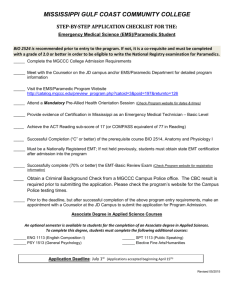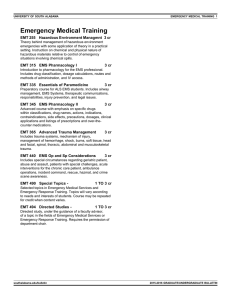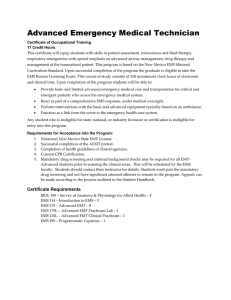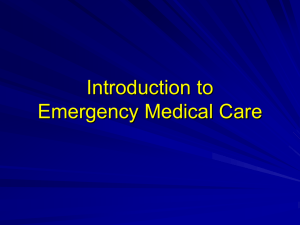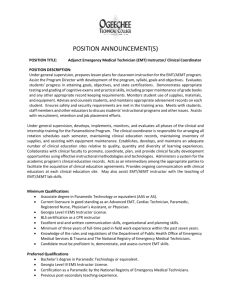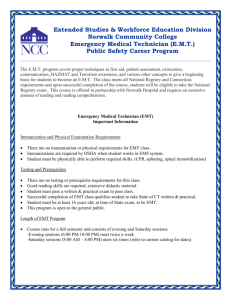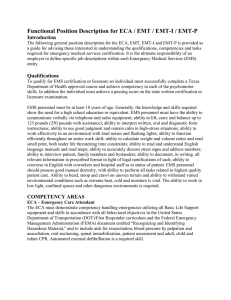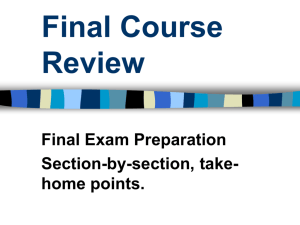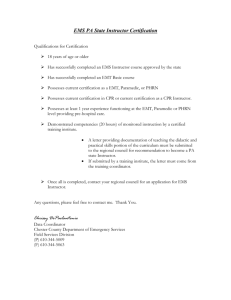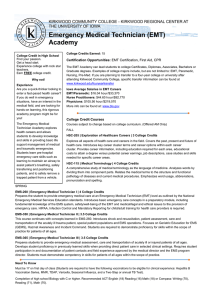Ready for Review - Emergency Care and Transportation of the Sick
advertisement
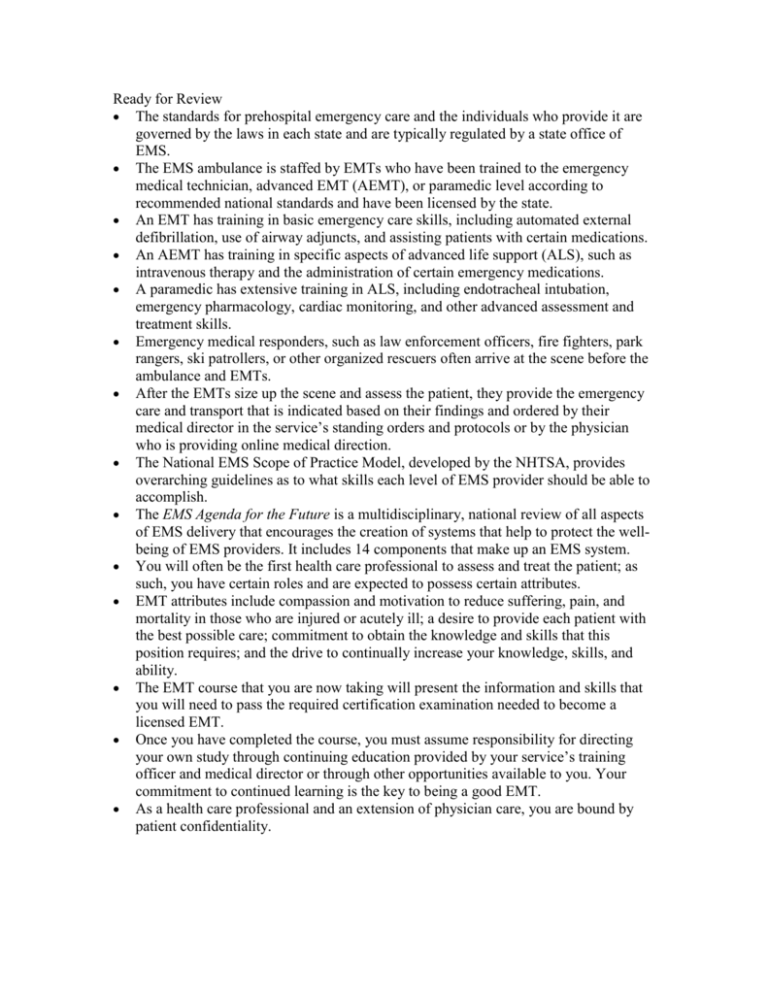
Ready for Review The standards for prehospital emergency care and the individuals who provide it are governed by the laws in each state and are typically regulated by a state office of EMS. The EMS ambulance is staffed by EMTs who have been trained to the emergency medical technician, advanced EMT (AEMT), or paramedic level according to recommended national standards and have been licensed by the state. An EMT has training in basic emergency care skills, including automated external defibrillation, use of airway adjuncts, and assisting patients with certain medications. An AEMT has training in specific aspects of advanced life support (ALS), such as intravenous therapy and the administration of certain emergency medications. A paramedic has extensive training in ALS, including endotracheal intubation, emergency pharmacology, cardiac monitoring, and other advanced assessment and treatment skills. Emergency medical responders, such as law enforcement officers, fire fighters, park rangers, ski patrollers, or other organized rescuers often arrive at the scene before the ambulance and EMTs. After the EMTs size up the scene and assess the patient, they provide the emergency care and transport that is indicated based on their findings and ordered by their medical director in the service’s standing orders and protocols or by the physician who is providing online medical direction. The National EMS Scope of Practice Model, developed by the NHTSA, provides overarching guidelines as to what skills each level of EMS provider should be able to accomplish. The EMS Agenda for the Future is a multidisciplinary, national review of all aspects of EMS delivery that encourages the creation of systems that help to protect the wellbeing of EMS providers. It includes 14 components that make up an EMS system. You will often be the first health care professional to assess and treat the patient; as such, you have certain roles and are expected to possess certain attributes. EMT attributes include compassion and motivation to reduce suffering, pain, and mortality in those who are injured or acutely ill; a desire to provide each patient with the best possible care; commitment to obtain the knowledge and skills that this position requires; and the drive to continually increase your knowledge, skills, and ability. The EMT course that you are now taking will present the information and skills that you will need to pass the required certification examination needed to become a licensed EMT. Once you have completed the course, you must assume responsibility for directing your own study through continuing education provided by your service’s training officer and medical director or through other opportunities available to you. Your commitment to continued learning is the key to being a good EMT. As a health care professional and an extension of physician care, you are bound by patient confidentiality.

